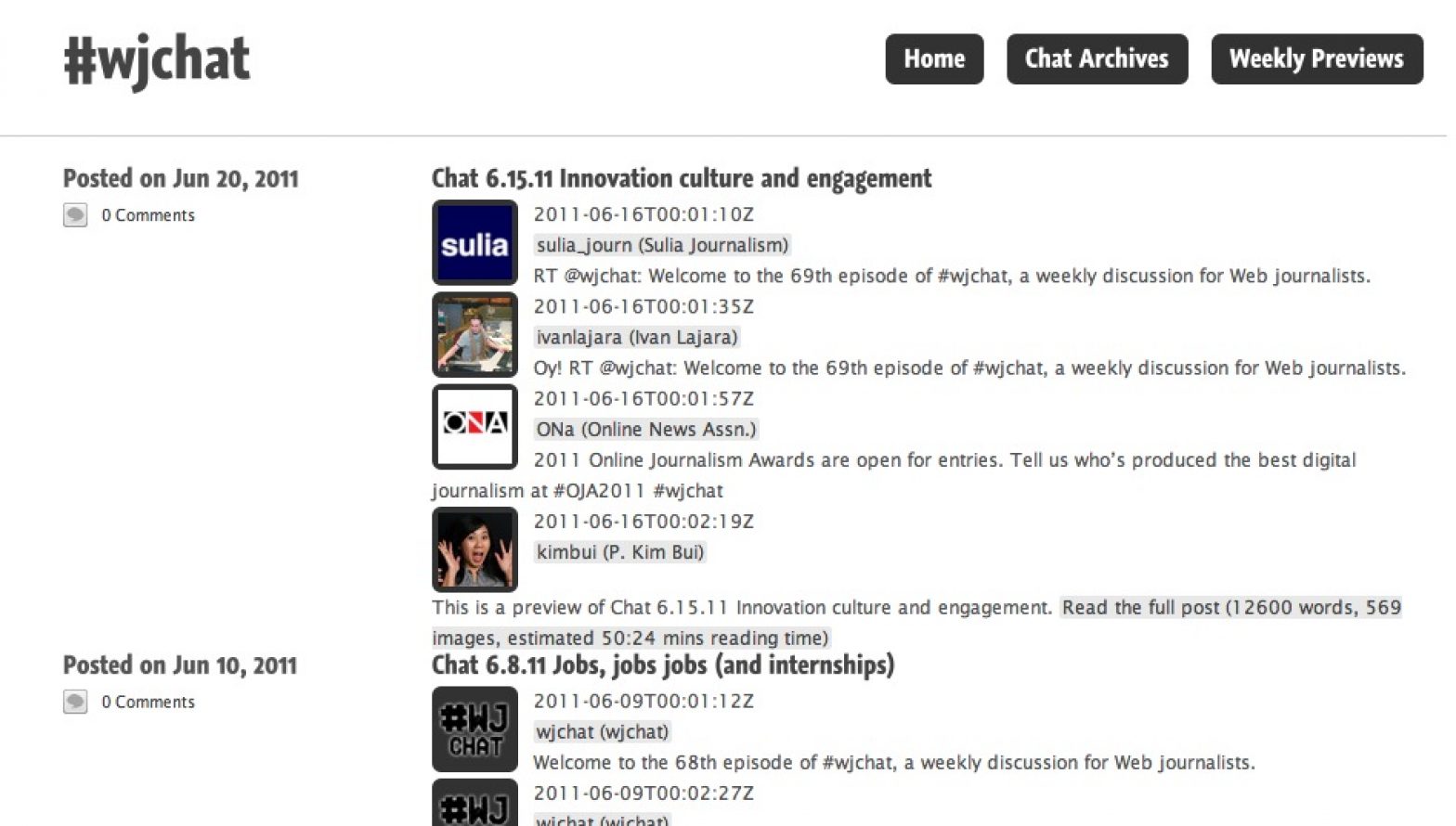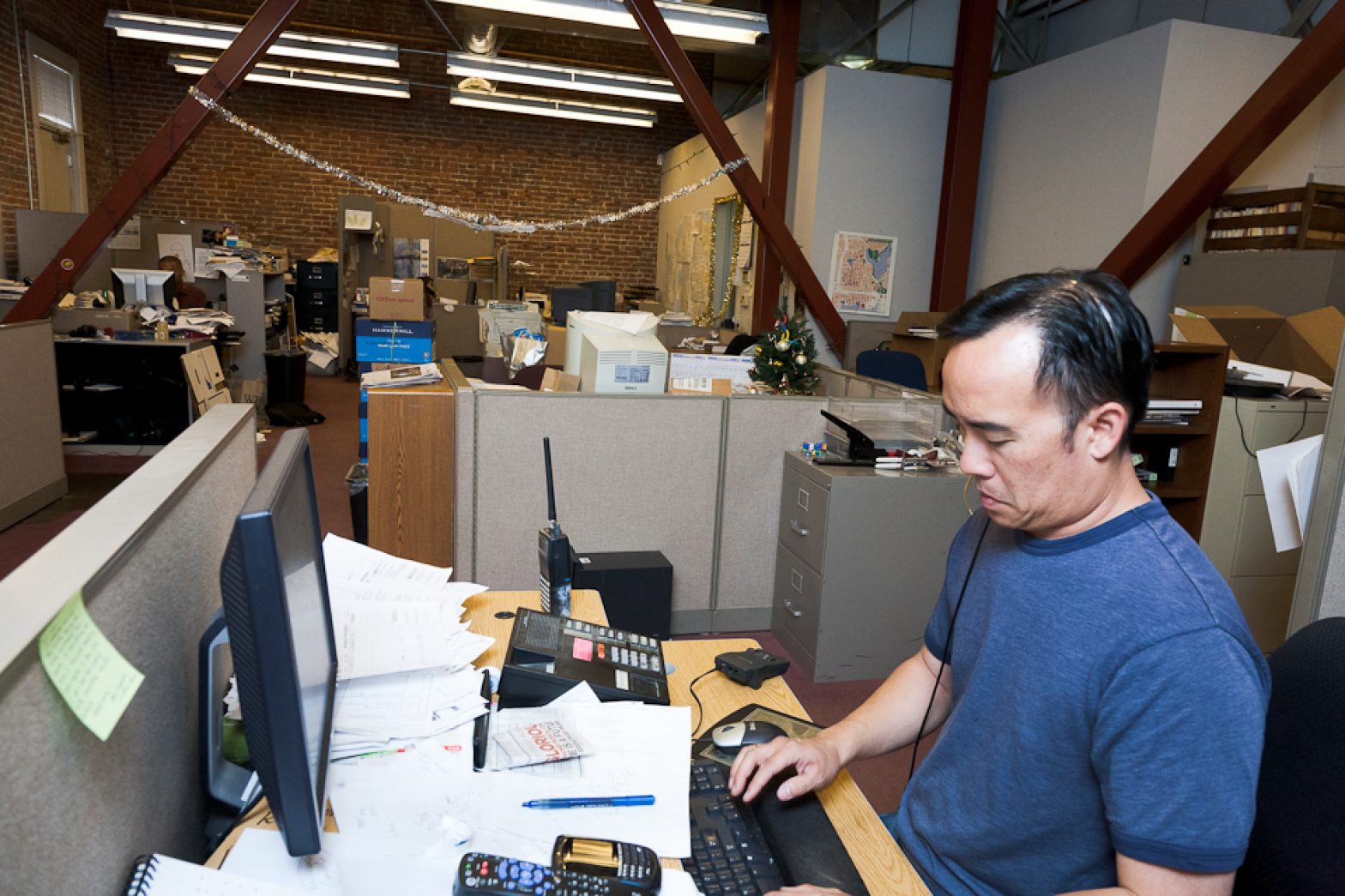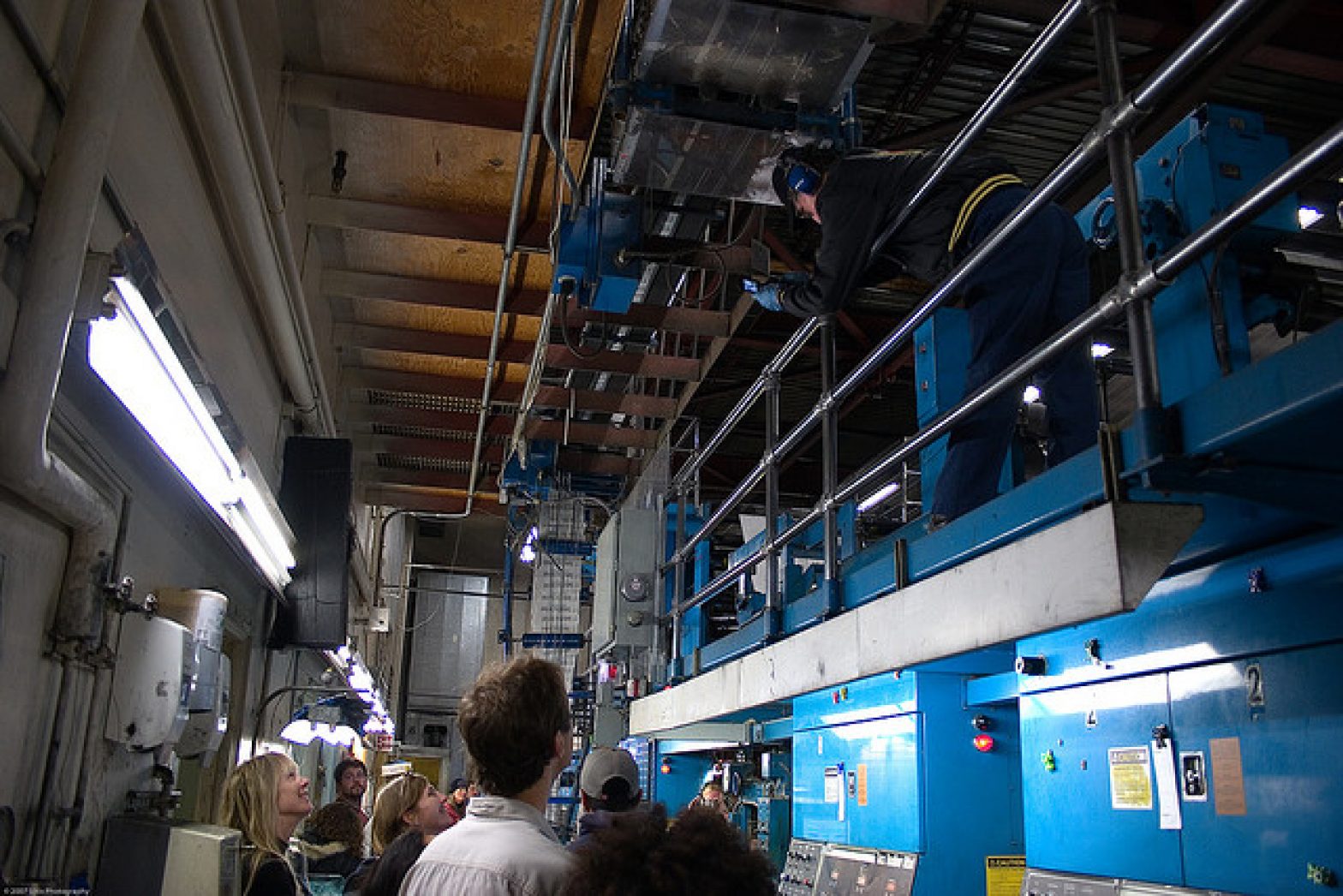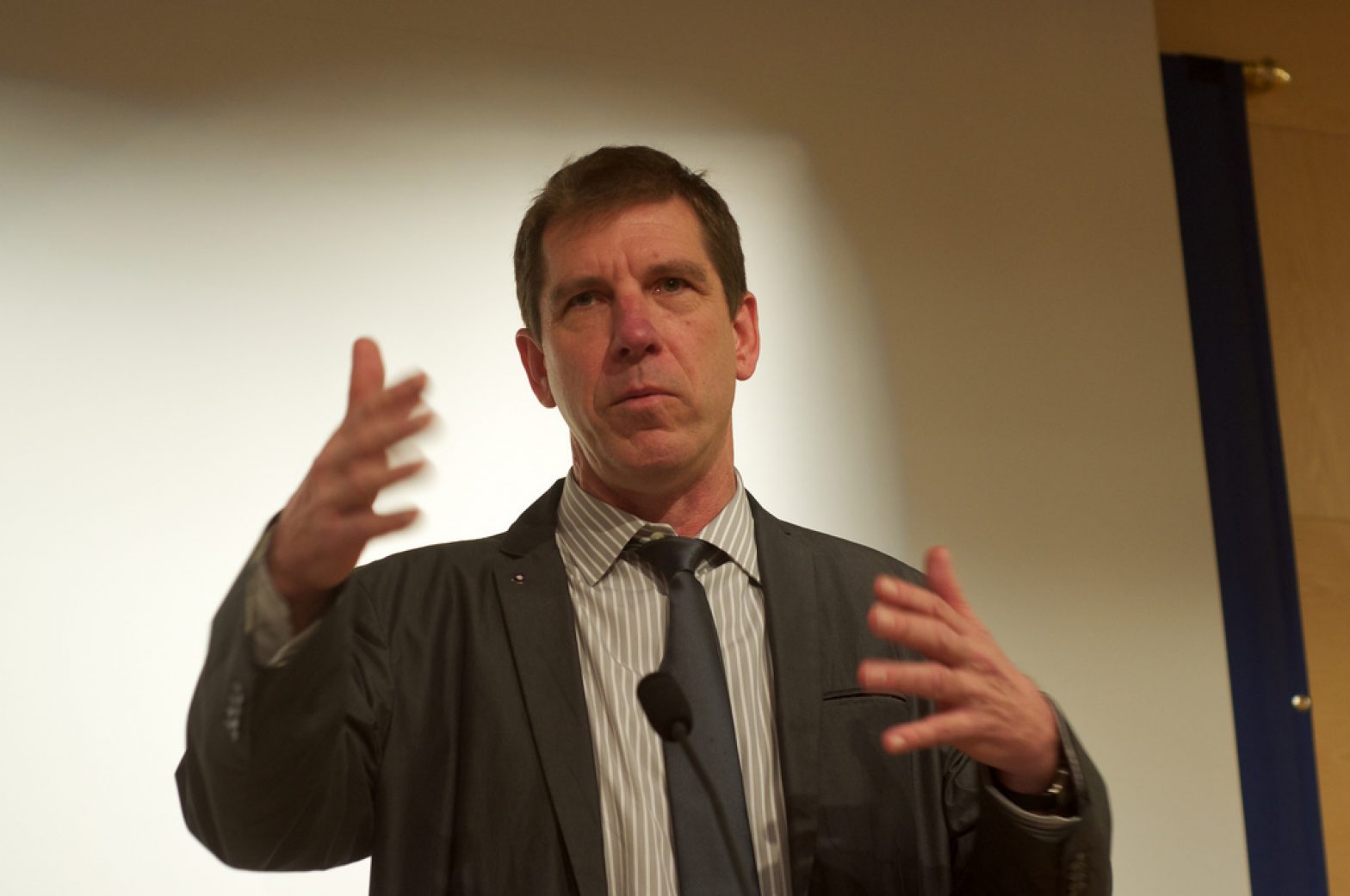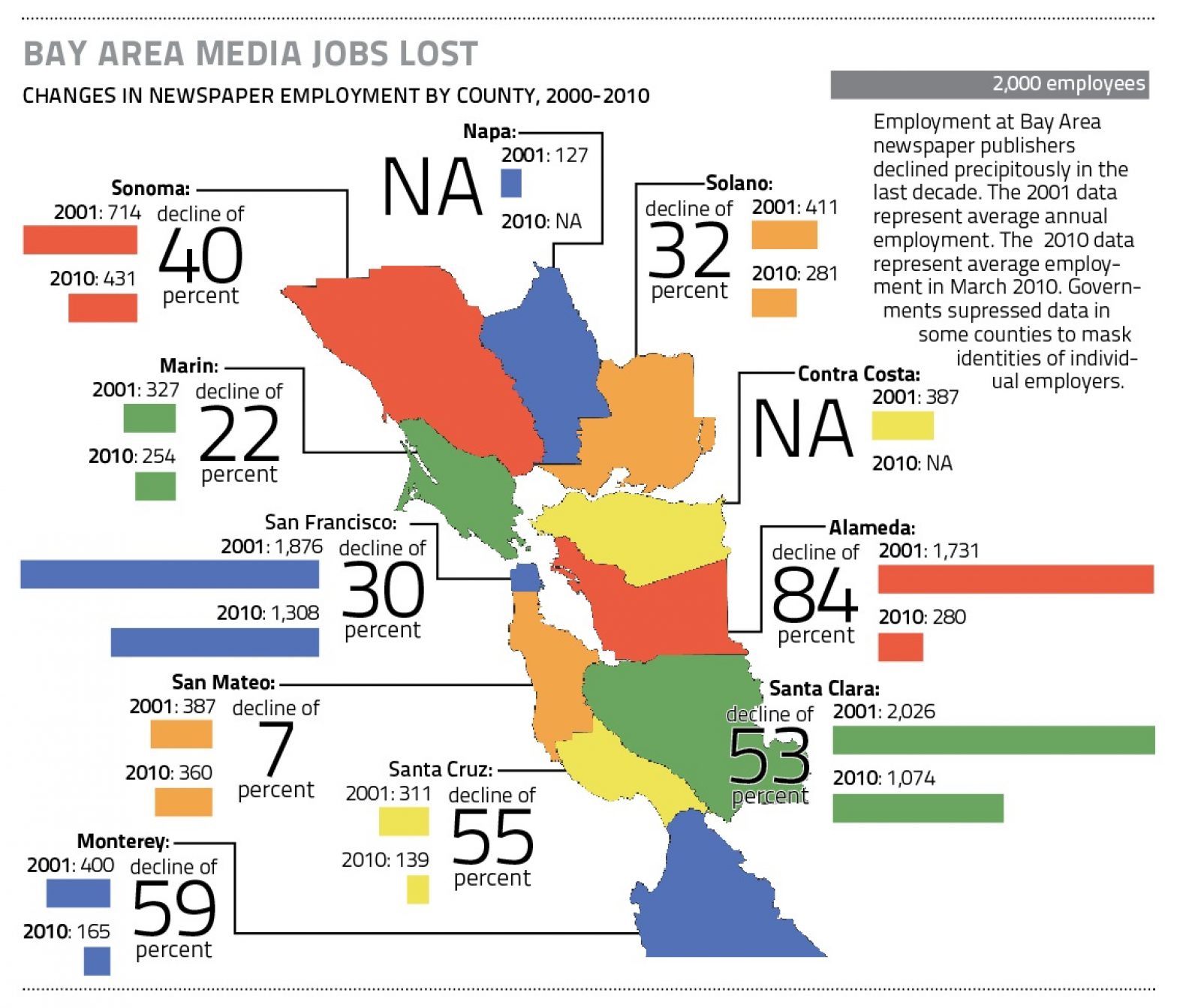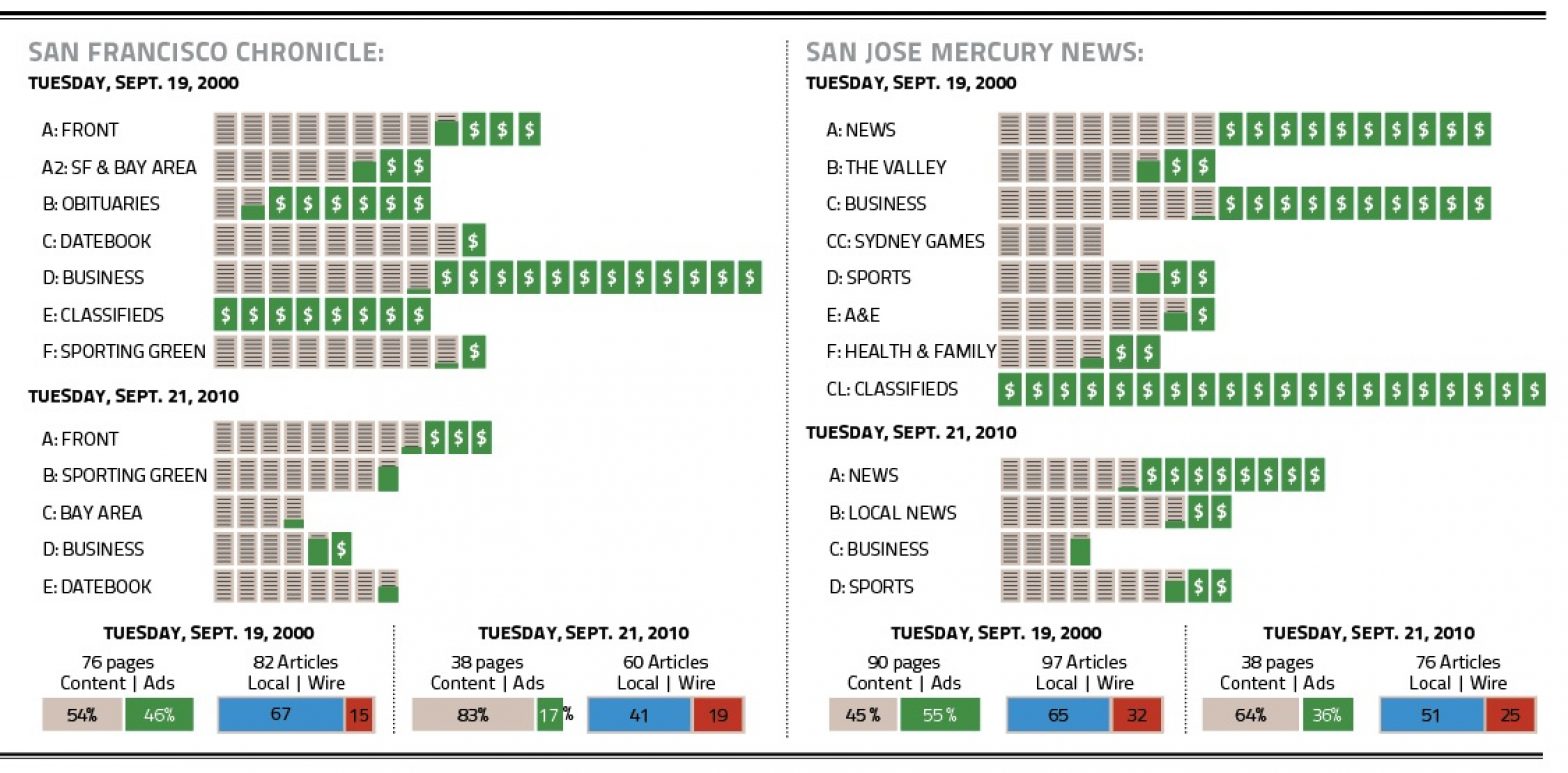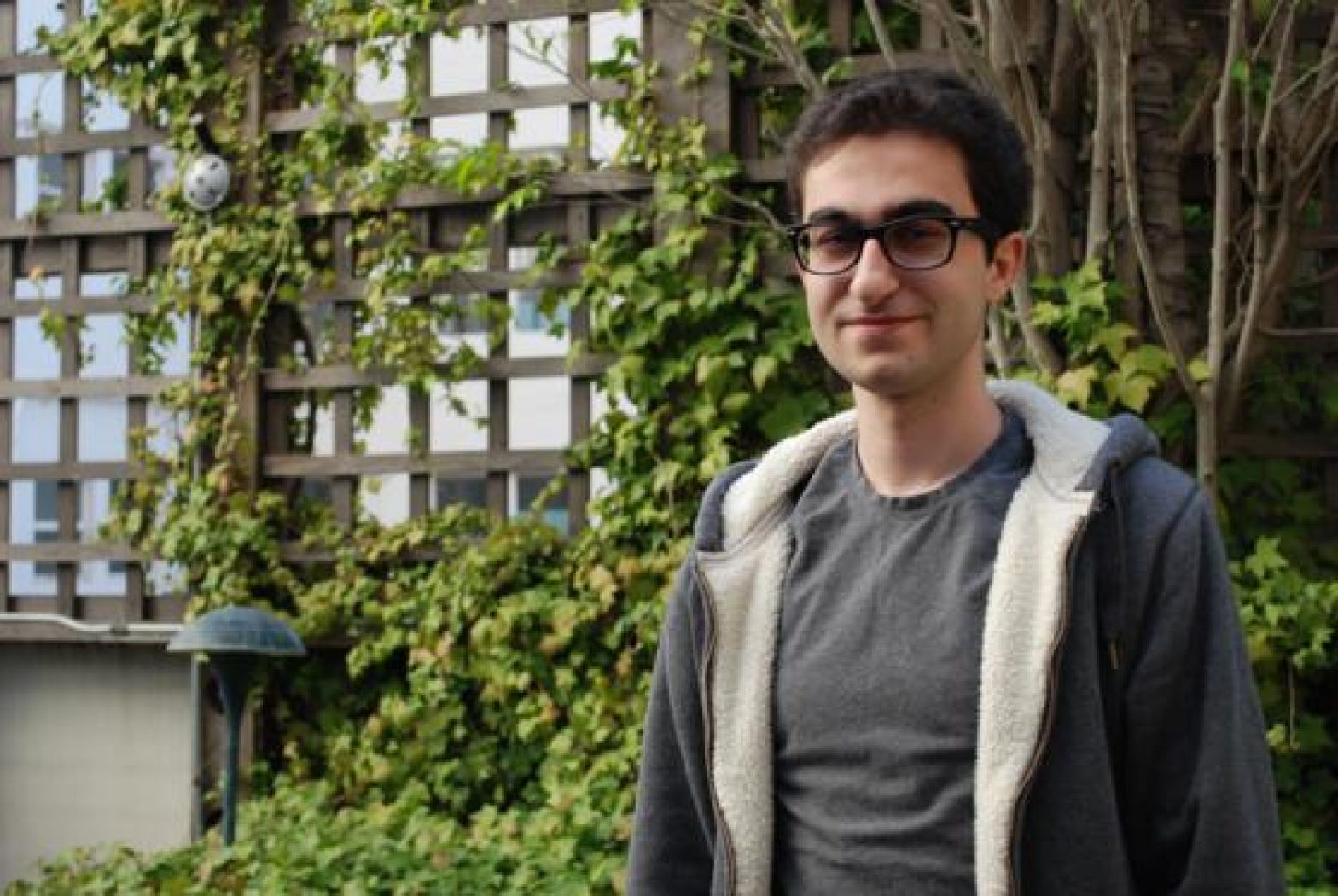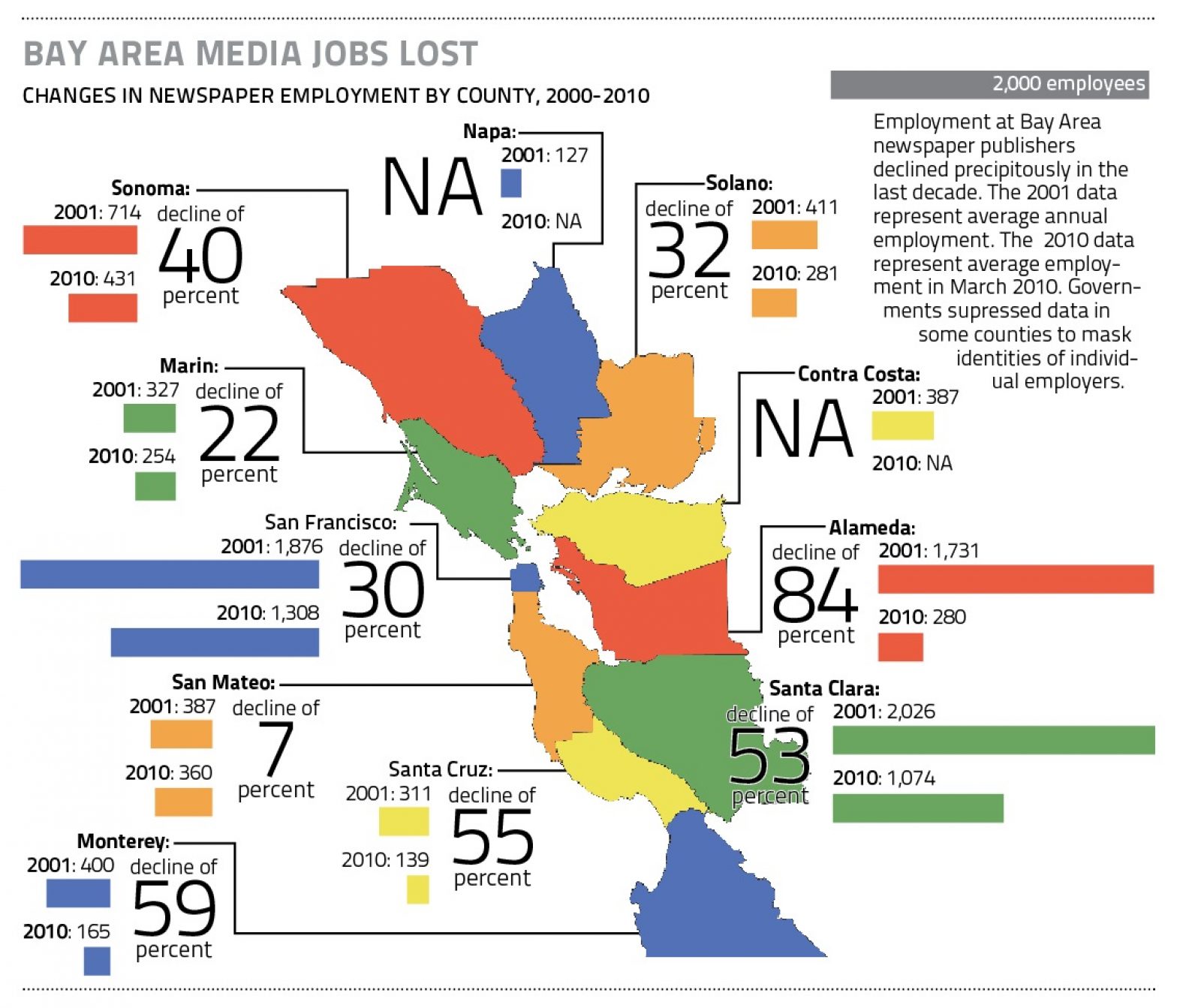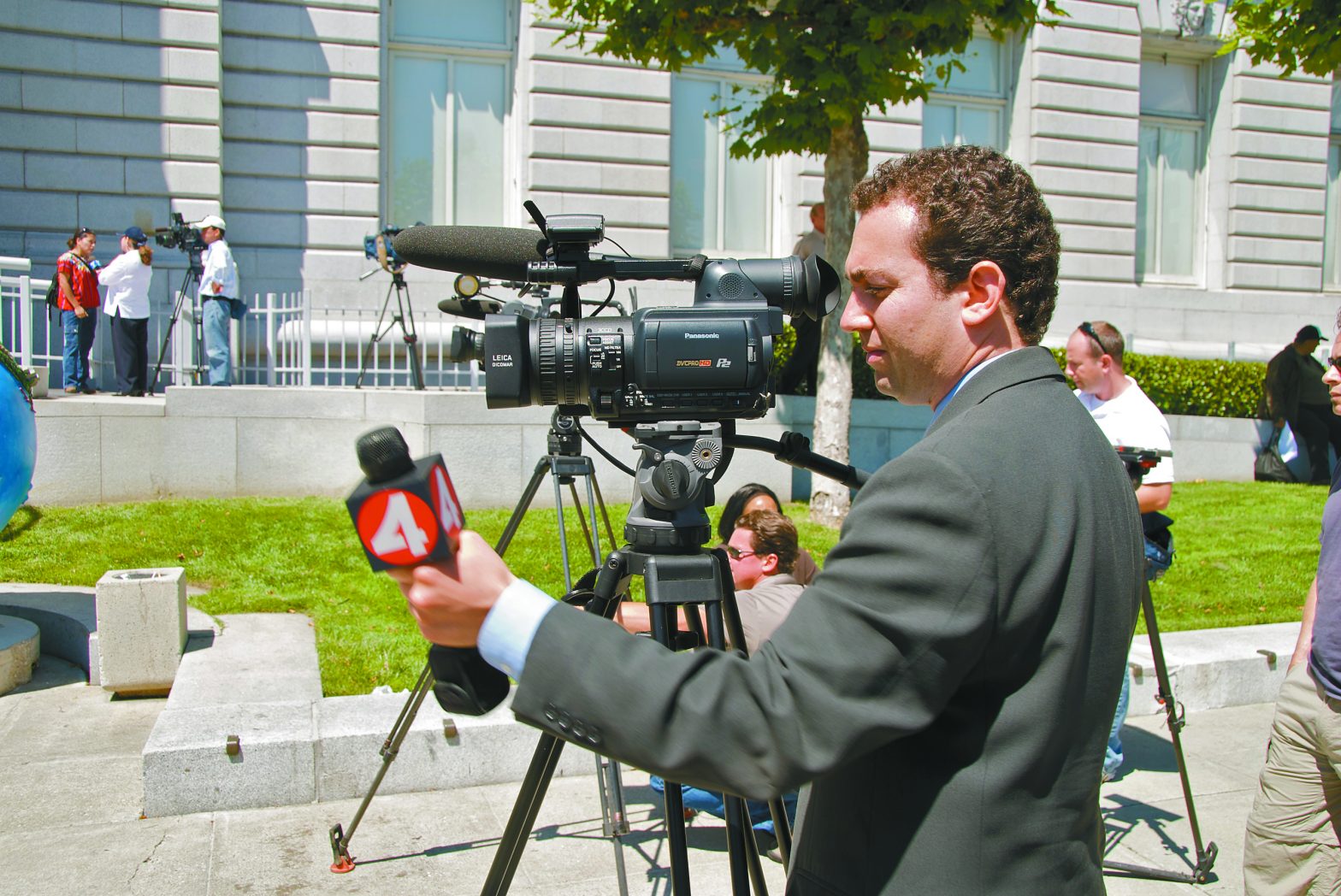From the Newsroom
Public Press coverage of Bay Area media meltdown featured on national #wjchat
This week’s #wjchat, a weekly chat for Web journalists on Twitter, was on a topic that is significant to journalists and nonjournalists alike: the future of journalism jobs.
The chat was founded by Robert Hernandez, assistant professor of professional practice at the University of Southern California, Annenberg’s School for Communication and Journalism, and Kim Bui, social media and communication editor at KPCC 89.3-FM in Pasadena.
According to the organizers, the focus for this week’s conversation was inspired by a series of articles on the Bay Area media landscape that was published by the San Francisco Public Press this spring.
@wjchat This #wjchat we’re talking the future of journalism jobs – inspired by @sfpublicpress recent report: http://bit.ly/jvMQgK Send us Qs!
The stories in the package include: a quantitative and qualitative analysis of how news organizations in the Bay Area are coping with smaller staff, the influence and emergence of thousands of new media startups in the area, and the impact of the shortage of ad-revenue on local broadcast journalists.
